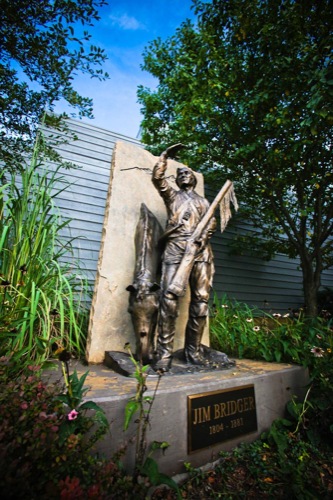
Courtesy National Frontier Trails Museum
Travelers today think nothing of choosing a destination and heading out by motorcoach. Along the way, they expect running water and a decent bed while ticking off hundreds or thousands of miles. But the pioneering travelers of the mid-1800s didn’t have it so easy.
As our fledgling nation moved west during the 19th century, outposts sprang up to provide protection and supplies for travelers. Many of those places still exist, telling today’s visitors engaging stories from pioneer times.
Groups will appreciate the realities of frontier life at Kentucky’s Fort Boonesborough and Wyoming’s Fort Laramie. Fort Dodge, built along the Santa Fe Trail, and nearby Dodge City’s colorful characters come to life at the Boot Hill Museum complex. Historically accurate mock trials are held at Fort Smith, which served as a major supply stop and housed the military for the Indian Territory, now the state of Oklahoma.
And for a terrific overview, Missouri’s National Frontier Trails Museum chronicles the determination of the more than 400,000 men, women and children who followed their dreams westward.
National Frontier Trails Museum
Independence, Missouri
Independence, Missouri, served as the main supply hub for the Oregon, Santa Fe and California trails from 1827 to 1860. The National Frontier Trails Museum chronicles that westward migration.
After watching the 17-minute film “West,” groups can pack a saddle and discover the goods that outfitters sold to immigrant families. Exhibits make extensive use of quotations from trail diaries, allowing pioneer travelers to tell their stories in their own words. Also highlighted are Lewis and Clark’s explorations, 1800s fur trappers and traders, the Mormon story and the transcontinental railroad, which brought the overland wagon trails to an end.
“With advance notice, the museum can bring in re-enactors [or] host a barn dance or a chuck wagon dinner with 1800s music,” said spokesperson Janeen Aggen. “On the 1852 Bingham-Waggoner Estate across the street, grassed-over wagon ruts, or swales, can still be viewed from a paved, interpretative walking path.”
The museum’s extensive bookstore stocks hard-to-find resources and children’s books and offers hands-on activities. The museum also partners with Pioneer Trails Adventures for tours of historic Independence by covered wagon.
www.ci.independence.mo.us/nftm
Fort Smith National Historic Site
Fort Smith, Arkansas
Fort Smith National Historic Site preserves nearly 80 years of frontier history. The historic site gives visiting groups an overview of important events in the area, from the establishment of the fort in 1817 to the final days of Judge Isaac C. Parker’s jurisdiction over Indian Territory in 1896.
Remnants of the second 1840s stone fort are part of the visitors center, courtroom and remodeled barracks. On the grounds, interpretative panels sit next to rebuilt stone foundations. In summer, walking tours include the Trail of Tears Overlook at the confluence of the Arkansas and Poteau rivers.
Daily ranger programs pertain to the marshals and outlaws period, jail exhibits, the government’s 19th-century Native American Indian policy and more. Mock trials are held three to four times annually in Judge Parker’s courtroom, a replica of the mid-1880s courtroom on the actual location.
“Our Night Court programs use original trial transcripts for re-enacted court cases,” said ranger and site historian Loren McLane. “Cases can take up to two and a half hours, and people from the audience participate as jurors.”
www.nps.gov/fosm










